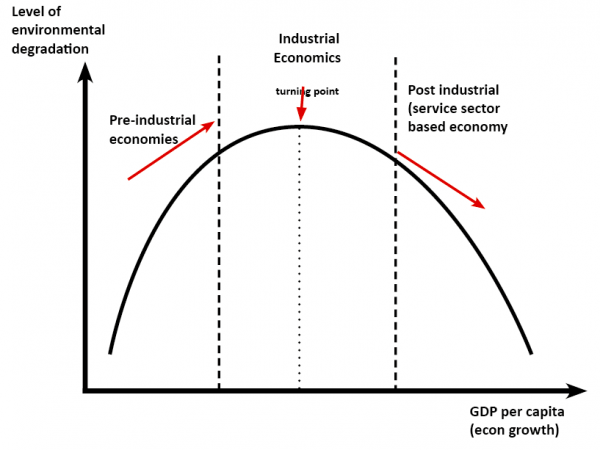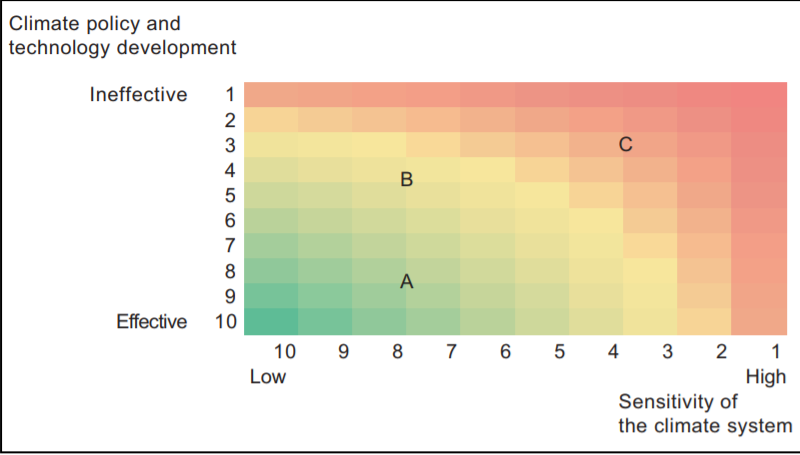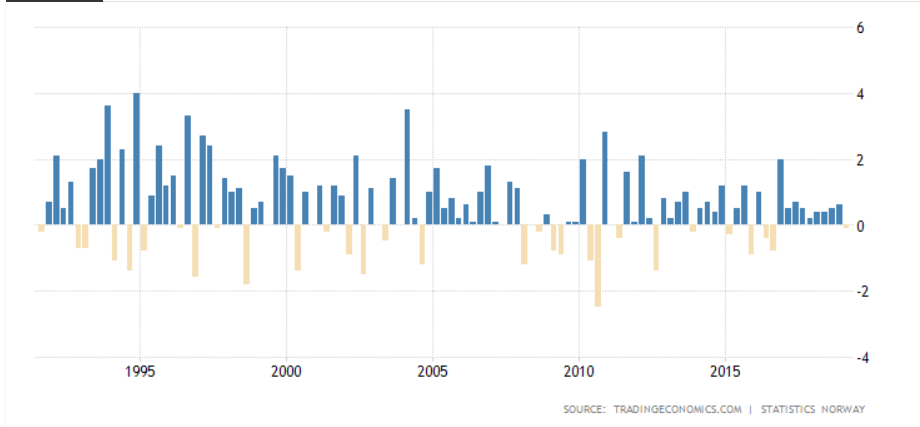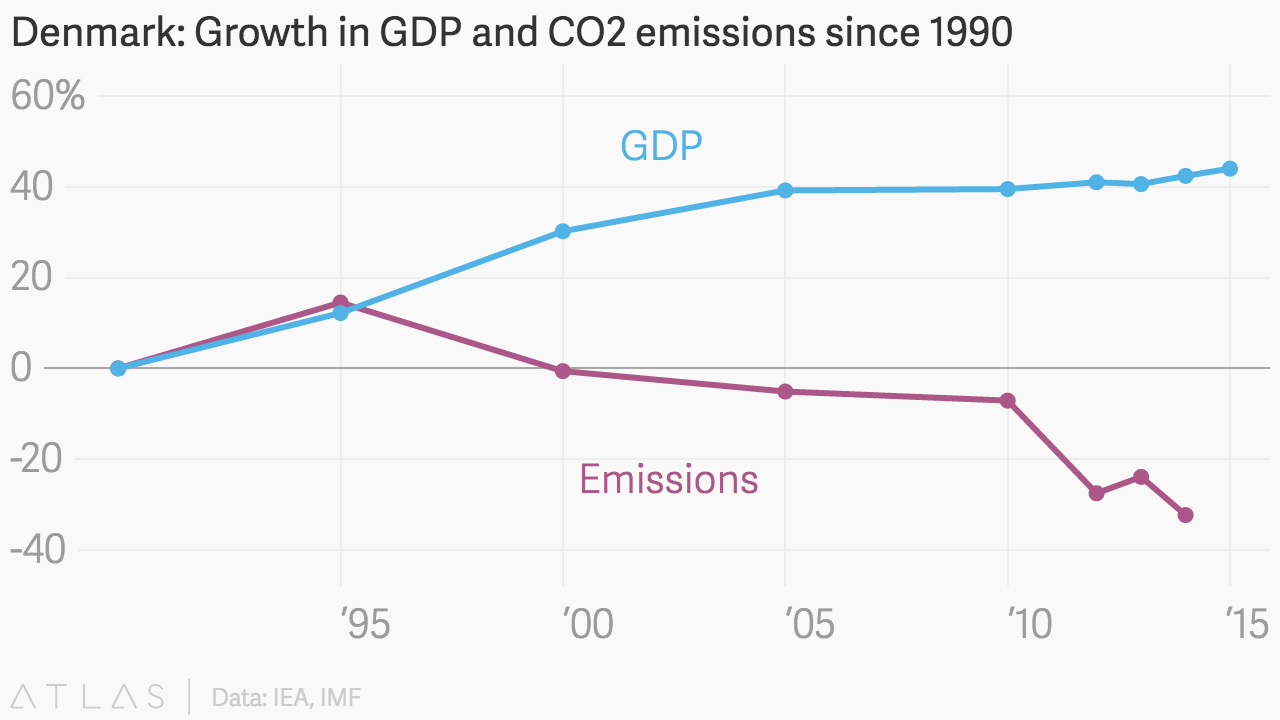Abstract
The present case study explains carbon policies introduced by Norway and Denmark – two European countries that have always been on the forefront of environmental change. Carbon taxes concern legislation whose main purpose is the reduction and eventual elimination of carbon emissions. Since the 1990s, both Norway and Denmark have been introducing carbon taxes that serve as incentives for fuel users to make a switch to alternative energy sources and, therefore, tackle pollution and delay climate changes. The dynamics of carbon policies development and their impact in the chosen countries fit the Environmental Kuznets Curve model. According to the said model, economic growth is needed for scientific, technical, and social advancements that will help to solve environmental issues. As the data analysis has shown, Norway enjoyed steady GDP growth in the 1990s, which coincided with fewer emissions. In the 2000s and 2010s, the country stagnated economically and was unable to decrease the carbon footprint. Denmark, on the other hand, has made more progress, and economic growth has brought about a decrease in CO2 emissions.
Introduction
A carbon tax is defined as the type of environmental legislation that seeks to impose limitations on the burning of carbon-based fuels such as coal, oil, and gas. The rationale behind introducing carbon taxes is extremely clear: uncontrolled and excessive combustion has been found to be destabilizing and destroying the climate. Comprehensive legislation might be the only feasible solution that would make users of carbon fuels pay for the climate damage. If a country decides to set the tax high enough, it turns into a powerful monetary disincentive that has the potential of leading the much needed change. Faced with increased expenses, companies might as well contemplate the switch to clean energy as it would be more economically rewarding. In the long term, carbon tax can make the use of alternative energy sources the new norm and set the standard in stone. The present study uses the Environmental Kuznets Curve (EKC) model for analyzing what Norway and Denmark have done so far and the impact that their policies have had.
Economic Model Analysis
Choice of Countries
The Northern European countries as a whole have always shown great concern for environmental issues and tried to amend the legislation accordingly. As stated in a recent report issued by the European Commission (2017), Denmark, Finland, Iceland, Norway, and Sweden are working on ambitious energy and climate legislative projects. Provided successful realization of the said initiative, these countries might as well go practically “fossil free” by 2050. Denmark and Norway have both expressed commitment to 100% renewable energy use, which surpasses the bars set by their neighbors – 80% for Finland and 50-75% for Iceland. It is projected that these policies will rely on renewable energy and energy-efficient technology.
So far, Denmark has already become a leader in the use of wind energy. Norway has a different approach but the same ambition: the country is a champion for hydroelectricity. As a result, carbon dioxide (CO2) emissions from energy supply have been on a steady decline in the region in the last few decades. It is compelling to study the cases of two neighboring countries with the same vision but different strategies. Moreover, the chosen countries – Norway and Denmark – show the most potential and may as well set a positive example for the rest of the Nordic region and even the world.
Defining the EKC model
The original application of the Kuznets Curve model concerns economic growth and inequality. The author of the theory put forward an idea that while at first economic growth drives economic disparity, once it peaks, the equality index is likely to be on the rise. Same goes for environment: admittedly, as the EKC suggests, the solution to pollution is economic growth. At first, rapid industrial advancements account for a high degree of environmental degradation (Waslekar, 2014). A prime example would be a major shift in the car industry that rendered personal vehicles more available for a common man. In the first half of the 20th century, a car was no longer a luxury but a part of everyday life. It is readily imaginable that the car market boomed, and the wide use of vehicles accounted for air, water, and soil pollution. However, in the developed countries, rapid economic growth made it possible to set out on a search for alternative energy sources and harness the degradation rate (see Graph 1).

The present case study attempts to explain the impact of current low-carbon policies introduced by Norway and Denmark in relation to the environmental Kuznets curve model. The EKC model is often criticized for its limitations; however, its use for this study is justifiable given that it applies to air pollution.
The Case of Norway
Country Introduction
The Norwegian government became environmentally aware early on: it first introduced carbon emission policies in the early 1990s. By 2005, Norway’s CO2 tax had become the most important climate policy instrument and covered almost two-thirds of Norwegian CO2 emissions and half of total GHG (greenhouse gas) emissions. The government, however, granted some industry sectors exemptions from the tax so that they could retain their competitive potential. In 2005, Norway implemented the first phase of an Emission Trading Scheme and joined the EU Emissions Trading Scheme three years later. Fast forward to the 2010s, around 55% of CO2 emissions in Norway had been taxed. The tax is charged per liter of oil and natural gas liquid as well as per standard cubic meter of gas combusted or directly emitted into the air through any other method.
Today, Norway is drawing on its previous experiences and attempting to introduce new, more innovative legislation. The country admits that global warming is one of the most serious challenges that the world is facing. In 2018, a Commission appointed by a Royal Decree presented a report to the Ministry of Finance, in which the experts described three possible scenarios (Graph 2).

Graph 2. Illustration of future climate changes in correlation to technology development and the efficiency of environmental policies
- Successful climate policy. This is the most optimistic scenario that implies that the Norwegian government is capable of implementing low-carbon policies. It accounts for a fast and smooth transition to a low-emission society. Since the government takes care of the environment, the situation is devoid of significant self-enforcing mechanisms that could aggravate air pollution.
- Late transition. Scenario B depicts a situation in which the government fails to make a swift transition and is back on the policies implementation. This leads to more pronounced climate changes and adverse economic effects.
- Dramatic climate change. This scenario involves political failure that triggers self-enforcing mechanisms in the climate system. The end result is catastrophic climate changes that cannot be evaluated at the moment (“Climate risk,” 2018).
Case Analysis
For this case analysis, the working hypothesis is as follows: “If Norway enjoys steady economic growth, environmental degradation must be on the decline.” In this case, environmental degradation (damage) is operationalized as the amount of carbon emissions in the atmosphere. First, it is important to outline how much progress Norway has made since the early 1990s. This study concerns the time period from 1991 through 2018 due to the fact that in 1991, the country has introduced its first ever carbon emission reduction and elimination policy.
The second part of this case analysis deals with the actual impact that the policies have had on the environment. Various studies conducted in the 1990s and an economic analysis by Statistics Norway have shown that the effect of the CO2 tax was a reduction of 2.5-11% of Norwegian emissions. The estimation was made under a business-as-usual approach (the prediction concerning emissions that would have occurred had the tax not been introduced). As seen from the Graph 3, Norway enjoyed better GDP growth dynamics in the 1990s as opposed to the 2000s and the 2010s. Thus, it is safe to say that up until 2000, the environmental impact and economic growth fit the Environmental Kuznets Curve model.

As Graph 3 demonstrates, starting in 2000, the economic growth in Norway has been stagnating or accelerating insignificantly. When contrasted with the data presented in Graph 4, it becomes clear that since 2000, there had been no positive dynamic in carbon dioxide gas emissions in the region. As Berglund (2019) states in her report, in 2018, it was revealed that between 2017 and 2018, the amount of CO2 emissions had risen by 0.4%. Norwegian climate activists called the news embarassing and pleaded Environment Minister Ola Elvestuen to take action. So far, there seems to be clear patterns in how the amount of gas emissions correlate with economic growth, which validates the chosen model (EKC).

The Case of Denmark
Country Introduction
Just like Norway, Denmark first became concerned with its carbon footprint in the early 1990s. The first comprehensive policy aiming at reducing carbon emissions was introduced in 1992. As of now, as stated in a report by OECD (2018), Danish energy taxes are levied in compliance with the framework of the 2003 EU Energy Tax Directive. The Directive is responsible for setting minimum rates for the taxation of energy products in member countries. Within the framework, Denmark has introduced the following energy use taxes:
- An energy tax applies to oil products, natural gas, coke, coal, and fossil waste. The rate is defined in proportion to the fuels’ energy content;
- A CO2 tax is applicable to oil products, natural gas, coke, coal, and fossil waste. The rate is defined in proportion to the fuels’ energy content;
- A tax on fossil waste is a combination of the input and output taxes. The output tax is levied on heat from energy production (OECD, 2018).
If more than one tax rate applies to one energy user or fuel, the energy tax profile shows the sum of all applicable taxes.
Case Analysis

As seen from Graph 5, the dynamics of economic growth and environmental recovery in Denmark fit the Environmental Kuznets Curve model. Since 1992, the Danish GDP has grown by more than 40%. This coincided with a rapid decrease in the amount of carbon dioxide emissions (by more than 35%). As projected, economic prosperity has allowed this Nordic country to take appropriate measures and address its carbon footprint. However, as recent news have revealed, Denmark might have to tame its optimism regarding environmental improvements. As Jex (2017) reports, the average Danish household carbon footprint ranked fifth in the EU. Denmark was placed behind such countries as Luxembourg, the UK, Ireland, Finland but ahead of Germany, Italy, and France. Jex (2017) states that the EU average is 11.5 tons CO2 whereas the Danish average of 14.5 tons surpasses it by almost 20%. Previously, Denmark had been called one of the countries that were the best prepared to tackle climate change.
Conclusion
Carbon taxes constitute the core policy aimed at the reduction and eventual elimination of the use of fossil fuel. Norway and Denmark were chosen due to the fact that these countries demonstrate the potential to introduce successful low-carbon policies like the rest of the Nordic countries. The present case study relies on the Environmental Kuznets curve model that describes the relationship between economic growth and environmental degradation. Both Norway and Denmark started working on carbon tax policies back in the early 1990s. As of now, the two countries impose taxes on oil products, natural gas, and fossil waste. The case study has shown that the Nordic countries in question fit the Environmental Kuznets Curve model. The periods of economic stagnation correlate with higher emissions, and vice versa. Carbon tax policies seem to be working better for Denmark than for Norway as the former has allegedly made more progress. Yet, it is difficult to say whether carbon taxes are inherently effective: the Danish average carbon footprint still raises concerns and needs to be addressed.
References
European Commission. (2017). Science for environment policy. Web.
Carbon Dioxide emissions in Norway from 2000 to 2018 (in million metric tons of CO2).Web.
Climate risk and the Norwegian economy.(2017). Web.
Denmark: Growth in GDP and CO2 emissions since 1990.(2017). Web.
Jex, C. (2017). Average Danish household has fifth highest carbon footprint in Europe.Science Nordic, Web.
López-Menéndez, A. J., Pérez, R., & Moreno, B. (2014). Environmental costs and renewable energy: Re-visiting the Environmental Kuznets Curve. Journal of Environmental Management, 145, 368-373.
Nina Berglund. (2019). Norway’s carbon emissions up again.News in English.no. Web.
Norway GDP growth rate. (2019). Web.
OECD. (2018). Taxing energy use 2018. Denmark.Web.
Waslekar, S. S. (2014). World environmental Kuznets curve and the global future. Procedia-Social and Behavioral Sciences, 133, 310-319.